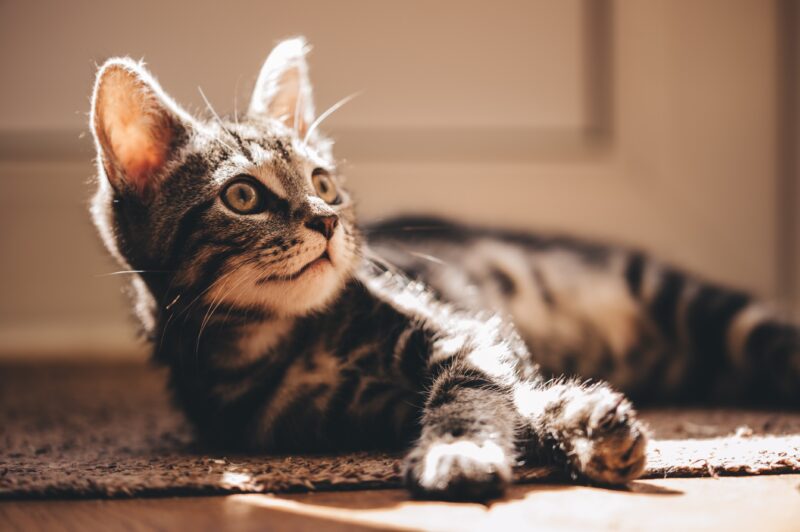Most cat owners know that along with having a cat as a companion, one must figure out how to contend with their scratching behaviour. In this post we will explore scratching behaviour directed towards furniture and other aspects of the home environment.
There are several reasons a cat will scratch, and preventing damage requires identifying and addressing the underlying cause.
Reasons to Scratch About…
The most obvious cause for scratching is to keep the claws conditioned. Cat’s claws grow in layers – have you ever seen the nail casings left behind by a cat, or remove the casing when doing a nail trim? If these layers are not removed the nails become thick and dull, making them inefficient tools for catching prey or self-defense. Though the average indoor cat doesn’t need to perform these tasks, the instinct to maintain the nails in prime condition remains.
Keeping a cat’s nails properly trimmed reduces his needs to maintain them via scratching, as well as removes the sharpened ends of the nails to reduce damage done during normal scratching behaviour.
Stretch Marks
Cats will also scratch when they stretch and as a form of exercise. Just like us, sometimes it feels good to stretch our legs after resting; it just so happens that at the end of the cat’s legs are sharp claws that can damage surfaces.
Placing ‘scratchable’ objects near your cat’s favourite resting areas encourages them to use these when they wake up and feel the need to get in a good stretch.
Watch how your cat chooses to stretch and offer scratching posts that match these habits – if your cat reaches out across the floor, offer horizontal scratch pads; if they extend themselves up the side of the furniture, the door or the wall, offer vertical scratching pads. The pads should be as long as their body or longer to facilitate a full stretch.
Also, observe if they have a preference for type of material – some cats prefer carpet, others sisal rope while others prefer cardboard or even wood. Having different options including their favourite options will encourage them to use the items you have chosen for them.
Stake a Claim
The final and possibly most important reason for scratching is as a way to mark territory. When a cat scratches a surface it not only potentially leaves a visible mark, it also leaves behind pheromones (a type of scent). This allows a cat to lay claim to what it considers its territory.
For outdoor cats, or cats in multi-cat households this purpose is more self-explanatory. A single-housed indoor cat might not need to do this from the human’s perspective but from the cat’s perspective this is important for feeling safe and secure in the house.
- If your cat is scratching near a door or window they may be trying to defend their territory against roaming outdoor cats that they can see or smell. Preventing access to these areas so they can’t perceive the threat, or using calming artificial pheromones can help reduce your cat’s sense of the need to mark their territory.
- When new furniture is brought to the home, it doesn’t smell like it belongs and a cat will want to add their scent to it to claim it as part of the territory.
- Check for conflict between cats in multi-cat households. If the cats do not get along they may scratch to claim objects from each other. Ensuring there are enough resources (food, water, beds, and litter boxes) can help reduce conflict between cats, or artificial pheromones can encourage cats to get along.
Use deterrents over targeted surfaces, such as double-sided tape, aluminum foil, or plastic covers, to prevent damage and discourage ongoing use of these sites. Adjacent to these areas, offer preferred scratching objects (see above for ways to determine your cat’s preferences). If this is not an ideal location for a scratching item long-term, try gradually moving it a few inches at a time to a more desirable location once your cat is using the appropriate item.
By making some changes around the house, it should be possible to minimize damage that results from the normal scratching behaviour of your feline friend. If you need additional advice or suggestions, give us a call and we’d be more than happy to discuss your concerns!
Other Resources and Further Reading:




